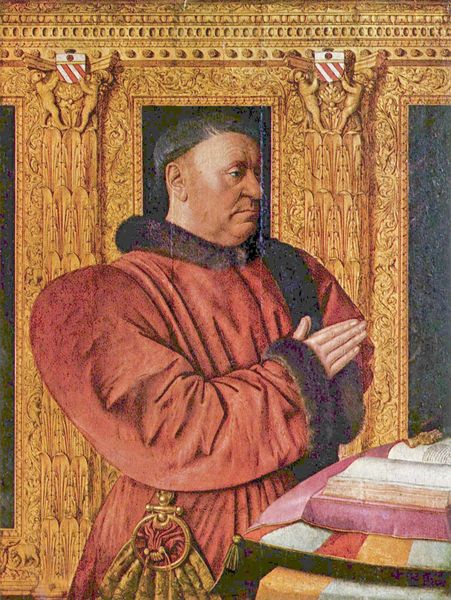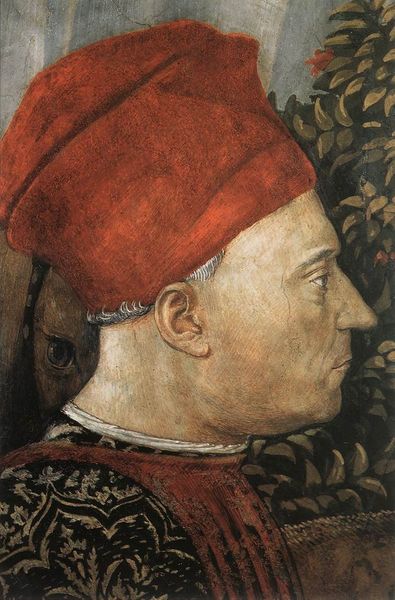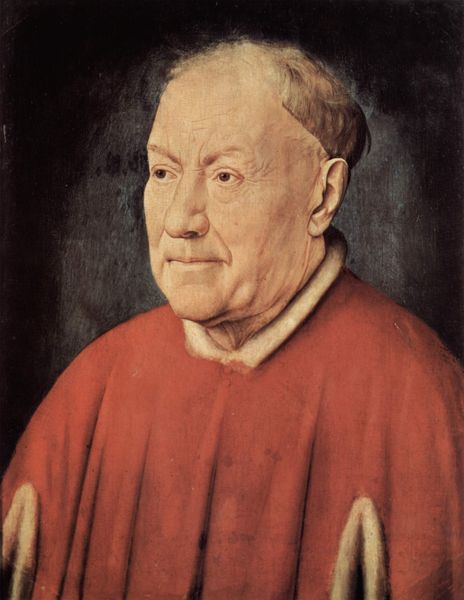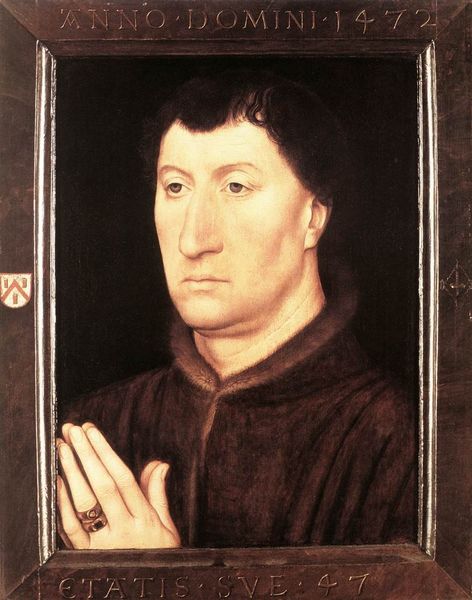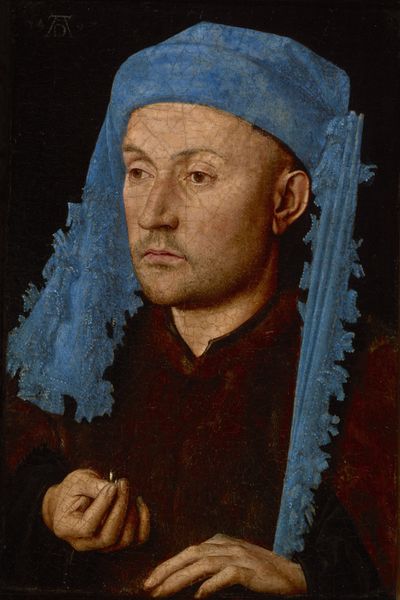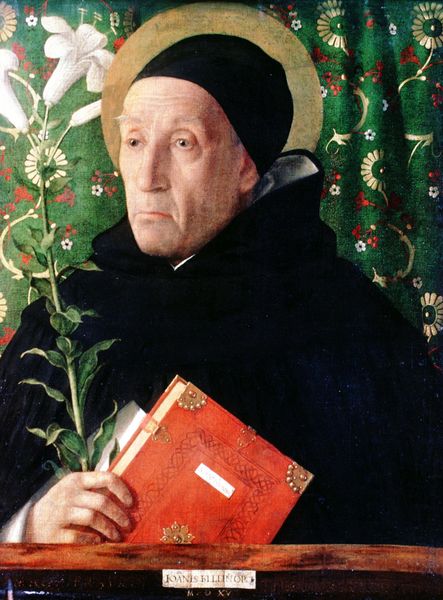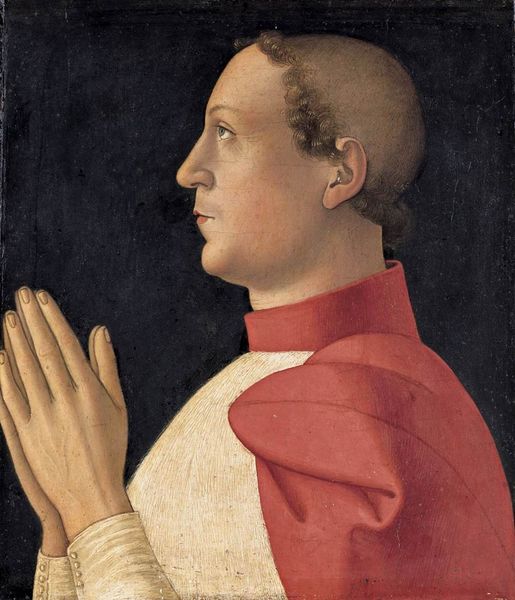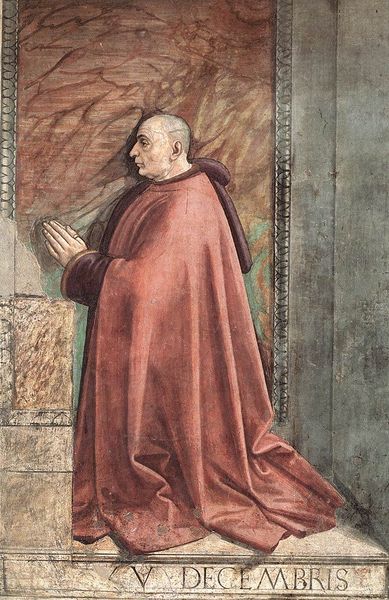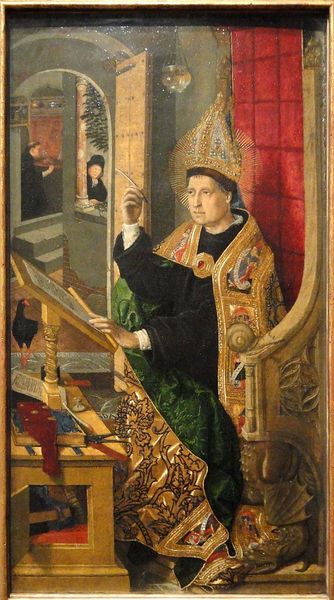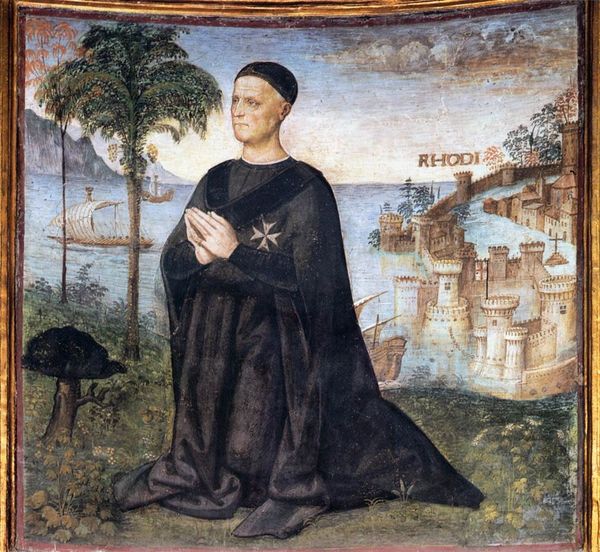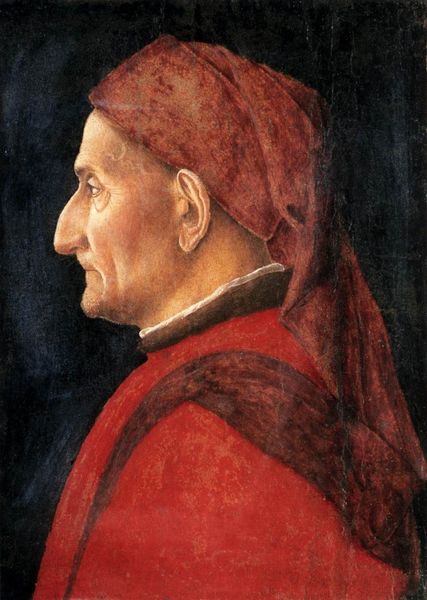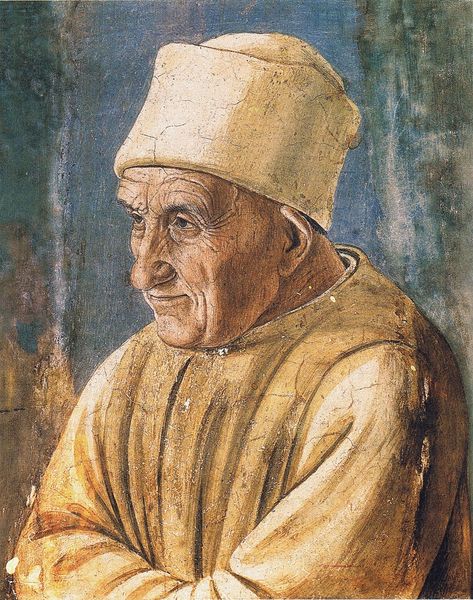
painting, oil-paint
#
portrait
#
painting
#
oil-paint
#
oil painting
#
cityscape
#
history-painting
#
northern-renaissance
#
early-renaissance
Copyright: Public domain
Jan van Eyck painted this portrait of Nicolas Rolin, the Duke of Burgundy’s Chancellor, in the early 1430s. The work encapsulates many key tensions within the religious and political culture of fifteenth-century Europe. Looking at Rolin’s lavish garments, his prominent nose, and his clasped hands, it is hard to know exactly what Van Eyck is trying to communicate. Is this a sincere portrait of religious devotion? Or is it rather a vain display of wealth and power? The carefully rendered details of the architecture, landscape, and even Rolin’s face, create a sense of realism and immediacy. But the painting also invites us to consider the role of patronage and the ways in which art could be used to legitimize the authority of powerful individuals. To truly understand a work like this, we need to examine historical documents such as letters, financial records, and other art from the period. By doing so, we can begin to unravel the complex social forces that shaped its creation and meaning.
